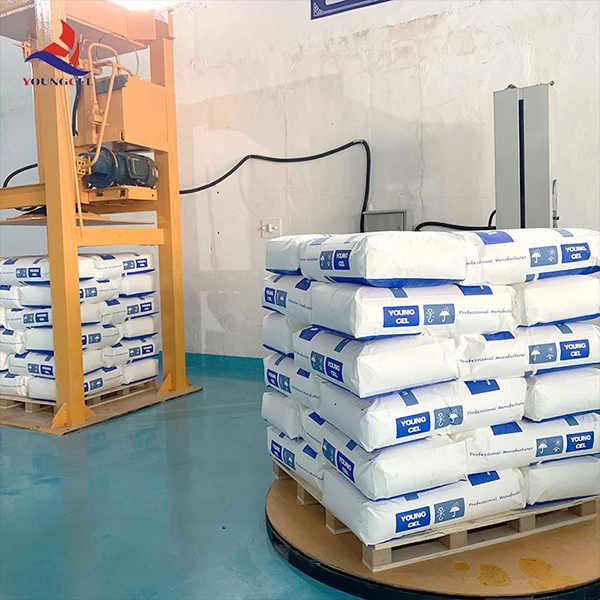The Importance of Cellulose in Industrial Applications
Cellulose, a complex carbohydrate and the primary structural component of plant cell walls, has gained significant attention as a versatile raw material for various industrial applications. Its unique properties make it an indispensable ingredient in numerous sectors, including textiles, food, pharmaceuticals, and environmental sustainability. With a growing emphasis on green technologies and sustainable practices, cellulose's role in industrial applications is more critical than ever.
Understanding Cellulose
Cellulose is composed of long chains of glucose molecules linked together by β-1,4-glycosidic bonds. This biopolymer is abundant in nature, primarily sourced from wood, cotton, and various plant fibers. Unlike synthetic materials, cellulose is biodegradable and renewable, making it an attractive alternative in a world increasingly focused on reducing environmental impacts and enhancing sustainability.
Textile Industry Applications
In the textile industry, cellulose is used extensively in the production of fibers like cotton, rayon, and lyocell. Cotton, one of the most widely used natural fibers, is valued for its softness, breathability, and comfort. Rayon and lyocell, derived from regenerated cellulose, offer excellent moisture-wicking properties and drape, making them popular choices for clothing, home textiles, and non-woven fabrics. As consumers become more aware of the environmental implications of their clothing choices, cellulose-based fibers, particularly those derived from sustainable sources, are poised to become even more popular.
Food Industry Applications
Cellulose also plays a significant role in the food industry, where it is utilized as a thickening agent, stabilizer, and texturizer. Microcrystalline cellulose and cellulose gel are examples of modified celluloses that enhance the texture and appearance of various food products, including sauces, dressings, and frozen foods. Additionally, cellulose can be used to reduce fat content and add bulk to low-calorie foods, enabling manufacturers to meet consumer demand for healthier options without compromising taste.
Moreover, cellulose-derived ingredients are gaining prominence in the development of plant-based and functional foods. As the global trend toward plant-based diets continues, cellulose’s properties can help improve the texture and nutritional profile of vegan products, serving as an excellent source of dietary fiber.
'cellulose for industrial'

Pharmaceutical Applications
In the pharmaceutical sector, cellulose is widely used as an excipient in drug formulations. Its biocompatibility, ability to control the release of active ingredients, and versatility make it an ideal choice for various dosage forms, including tablets, capsules, and topical applications. Microcrystalline cellulose is often employed as a binding agent or filler, improving the consistency and efficacy of medications.
Furthermore, cellulose derivatives, such as hydroxypropyl methylcellulose (HPMC), are utilized in creating controlled-release formulations, enhancing drug solubility, and developing gel capsules. As advancements in nanotechnology proliferate, cellulose nanofibers and nanocrystals are also being explored as carriers for drug delivery systems, showcasing the biopolymer's potential in innovative pharmaceutical applications.
Environmental Sustainability
One of the most pressing issues facing industries today is sustainability. The use of cellulose in place of synthetic materials contributes significantly to reducing greenhouse gas emissions and minimizing the ecological footprint of manufacturing processes. Biodegradable cellulose-based products help address the global crisis of plastic waste, providing a sustainable solution to packaging, disposable items, and various other applications.
Research into cellulose recycling and upcycling is also gaining momentum, with technologies emerging to convert industrial waste and byproducts into valuable cellulose products. Innovations in this area enhance the circular economy, ensuring that cellulose materials are reused and repurposed rather than ending up in landfills.
Conclusion
As industries evolve and the world shifts toward sustainability, cellulose is poised to assume an even more significant role in various applications. Its natural abundance, biodegradability, and versatility provide endless opportunities for innovation across multiple sectors. By embracing cellulose, industries can not only enhance their products but also contribute to a more sustainable future, aligning with the growing global demand for environmentally friendly solutions. The integration of cellulose into industrial processes marks a critical step toward a greener and more sustainable world, benefiting economies, ecosystems, and communities alike.
-
The Application and Significance of Construction RdpNewsMay.19,2025
-
Industrial Grade HpmcNewsMay.19,2025
-
Building Coating Adhesive Building Coating Adhesive HpmcNewsMay.19,2025
-
Application Of Hpmc For Detergent For Detergent In DetergentsNewsMay.19,2025
-
Application Of Hpmc Cellulose In Cement-Based MaterialsNewsMay.19,2025
-
Application Of High Quality Hpmc For Construction In The Field Of ConstructionNewsMay.19,2025




